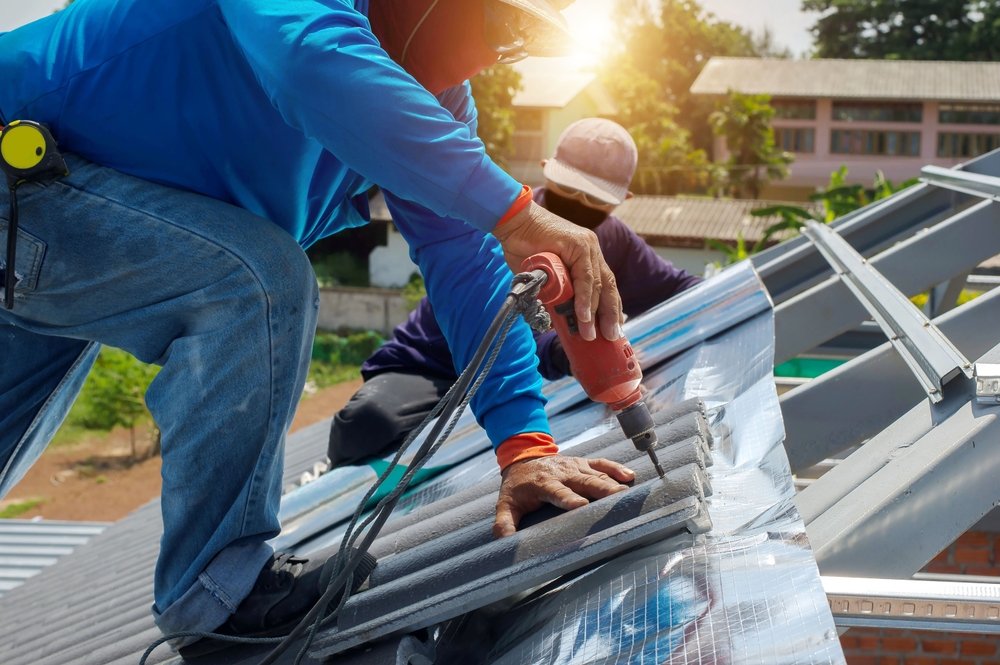Southeast Insights
Your go-to source for news and information from the vibrant heart of Shenyang.
Roof Repair Revelations: When to DIY and When to Call for Reinforcements
Discover when to tackle roof repairs yourself and when to call the pros. Don't risk it—get the insights you need for a safe and savvy choice!
Top 5 Signs Your Roof Needs Professional Help
Understanding when your roof requires professional attention is critical to maintaining the integrity of your home. Here are the top 5 signs that indicate it's time to call in the experts:
- Leaks and Water Stains: If you notice water stains on your ceiling or walls, it could signify that your roof is leaking. Even minor leaks can lead to significant damage over time if not addressed promptly.
- Missing or Damaged Shingles: Inspect your roof for any missing, curled, or damaged shingles. These issues can compromise the roof's ability to protect your home from the elements.
- Granules in the Gutters: If you find roofing granules in your gutters, this is often a sign that your shingles are deteriorating and may need to be replaced.
- Sagging Roof Deck: A sagging roof deck is a serious indication of structural damage that could lead to a potential collapse. If you notice sagging, it’s crucial to contact a professional immediately.
- High Energy Bills: Unexplained increases in your energy bills might suggest that your roof is not providing adequate insulation. An inspection can reveal if repairs or a replacement are necessary.

DIY Roof Repair: What You Need to Know Before You Start
Embarking on DIY roof repair can be a rewarding project, but it's essential to arm yourself with the right knowledge before you start. First, assess the damage to determine whether a simple patch or a comprehensive repair is necessary. Check for signs such as leaks, missing shingles, or unusual sagging. It's advisable to gather tools and materials such as roofing cement, replacement shingles, and safety gear. Always prioritize safety by using a sturdy ladder and wear a harness if you're working on a steep slope.
Once you've prepared, a systematic approach can make the process smoother. Start by removing any damaged shingles carefully and cleaning up the debris. Next, apply roofing cement to the affected area, ensuring a watertight seal. If you're replacing shingles, make sure they match the existing roofing material for blend and effectiveness. Remember, regular maintenance can prolong the life of your roof, so consider scheduling annual inspections to catch any potential issues early.
When to Call a Roofer: Expert Tips for Homeowners
Knowing when to call a roofer is crucial for maintaining the integrity of your home. Homeowners should be vigilant for signs that may indicate roof damage or deterioration. Common symptoms include missing shingles, water stains on your ceiling, or a sagging roofline. If you notice these indicators, it's essential to act quickly. Delaying repairs can lead to more significant problems down the road, including structural damage or mold growth. Additionally, after severe weather events such as storms or high winds, a thorough inspection is recommended to catch any potential issues early.
It’s important to establish a maintenance routine and know when to call a roofer for regular assessments. For instance, scheduling an annual inspection can help identify minor issues before they escalate. You should also consider reaching out to a roofing expert after completing renovations that could impact your roof, such as installing new gutters or solar panels. By prioritizing these checks and understanding when professional help is needed, homeowners can protect their investment and ensure their roofs remain in optimal condition.